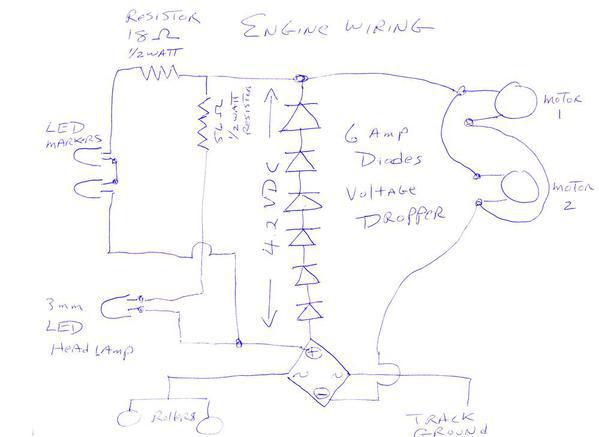This is how I do it. I find it works best for me. I used it after throwing traction ties on some locos wired in series.
Click to enlarge
Here are the advantages copied from another of my posts in reply to the same question asked here.
The diode dropper gives 4 volts less to the motor than it otherwise would have from track power. So the lights would have 4 more volts at a given speed.
At 18 volts throttle with series wiring each motor would get 9 volts. On a sharp curve the load would be uneven and voltage would not distribute evenly. The motors would not run evenly either.
At 18 volts throttle with the parallel wiring and voltage dropper, each motor would get 13 volts even counting the voltage drop of the bridge.
Thus the parallel wiring has more pulling power potential.
If the LED are hooked up as described they will burn at constant brightness from 6 to 18 volts on the throttle.
At 5 to 6 volts the motor would stall, you can stop the train, but the lights would stay on since they still have 5 volts. The engine lights are wired through the dropper which clamps the voltage.
Passneger cars with CV lighting would be left on also. So in conventional you could stop a train and leave the lights on.
Here is a link on how to make the diode string
Dale H






